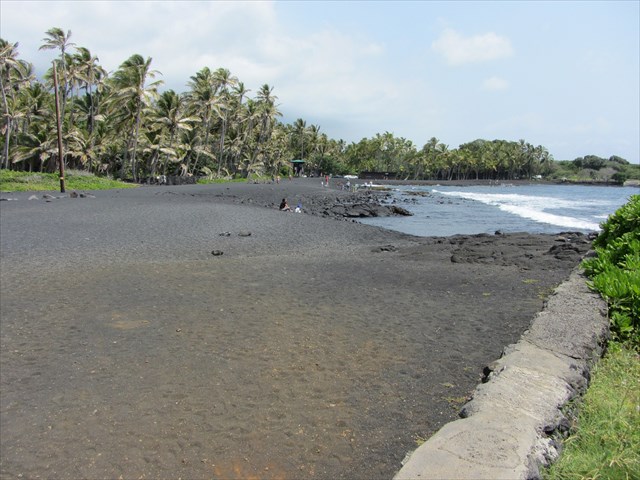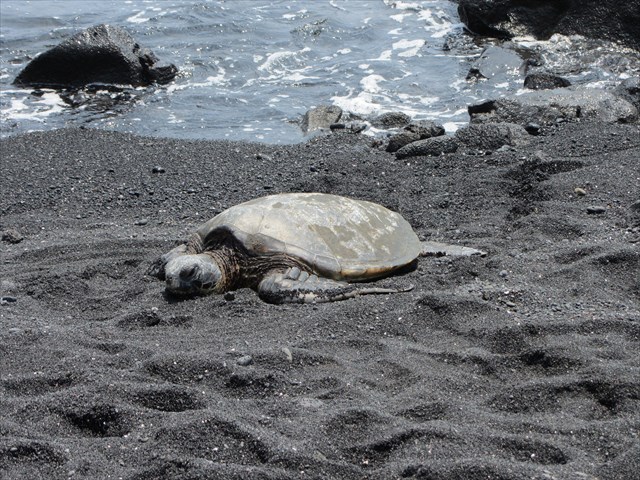This is an EarthCache. As such, there is no container to find, but rather you will need to make some observations and answer the Logging Questions listed in the cache description.

Hawaii is known for its black sand beaches, but how do they form? First, let's think about how sandy beaches normally form. Most white sand beaches (like in California) are composed of light coloured minerals that have eroded from continental rocks and washed into the ocean. The white sand beaches you find in Hawaii are different as these are composed of shell and coral fragments. The white sand beaches of Hawaii and California may look alike, but they are very different. Hawaii's white sand beaches are biological while California's are physical in origin.
Black sand beaches can form in a similar way from erosion of volcanic rock. The rivers cut through the black volcanic rock and erode it. As the eroded rock is carried toward the ocean it breaks up and forms small sediments by the time it reaches the ocean. These pieces of black sand have been rounded by erosion and the grinding with other sediments on their way to the ocean.
Another way that black sand beaches can form is from the hot lava hitting the cold ocean water in certain conditions. When this happens the lava explodes, forming small black chards. These chards are originally very sharp (like broken glass), but will become more rounded as the ocean waves erode them. These chards are usually jet black in colour and glossy like glass.
Logging Requirements:
Your task is to try to determine how the Punalu'u Black Sand Beach formed. To log this EarthCache please send an email through the link in my profile with the answers to the following questions:
1) At the posted coordinates, pick up a handful of dry black sand and describe what you see
- Are the pieces round or angular?
- Would you say this sand is fine, medium, coarse, very coarse? (think in terms of sand paper)
- What colour(s) do you see?
- Are the pieces glossy or dull?
- Does it feel heavier or lighter than traditional sand?
Be sure to place your handful of sand back on the beach. Reminder that you are not allowed to remove sand from this beach.
2) How do you think this beach formed?
- Through the erosion of volcanic rock
- Through the lava hitting the ocean and exploding into volcanic glass
3) OPTIONAL: If you have found a Black Sand Beach EarthCache on one of the other Hawaiian Islands, describe how it compares to this one.
Photos are welcome, but not required.
Once you have emailed your answers, feel free to log your find immediately - you do not need to wait for a response. We will respond to your email to confirm if your answers were correct.
Green Sea Turtles (Honu)

Sea Turtles can often be seen here in the water or sunning themselves on the sand. Please do not touch the turtles and stay at least 15 feet (5 meters) away from them. It is illegal to touch or disturb them in any way and fines may be imposed for doing so. They are a protected species here in Hawaii.
References:
Doughty, Andrew. Hawaii The Big Island Revealed The Ultimate Guidebook. 6th Edition. Lihu'e: Wizard Publications Inc., 2011. Print.
Special thanks to G. Anderson for providing much of the technical information used to develop this EarthCache.
Photos by junglehair, 2012.